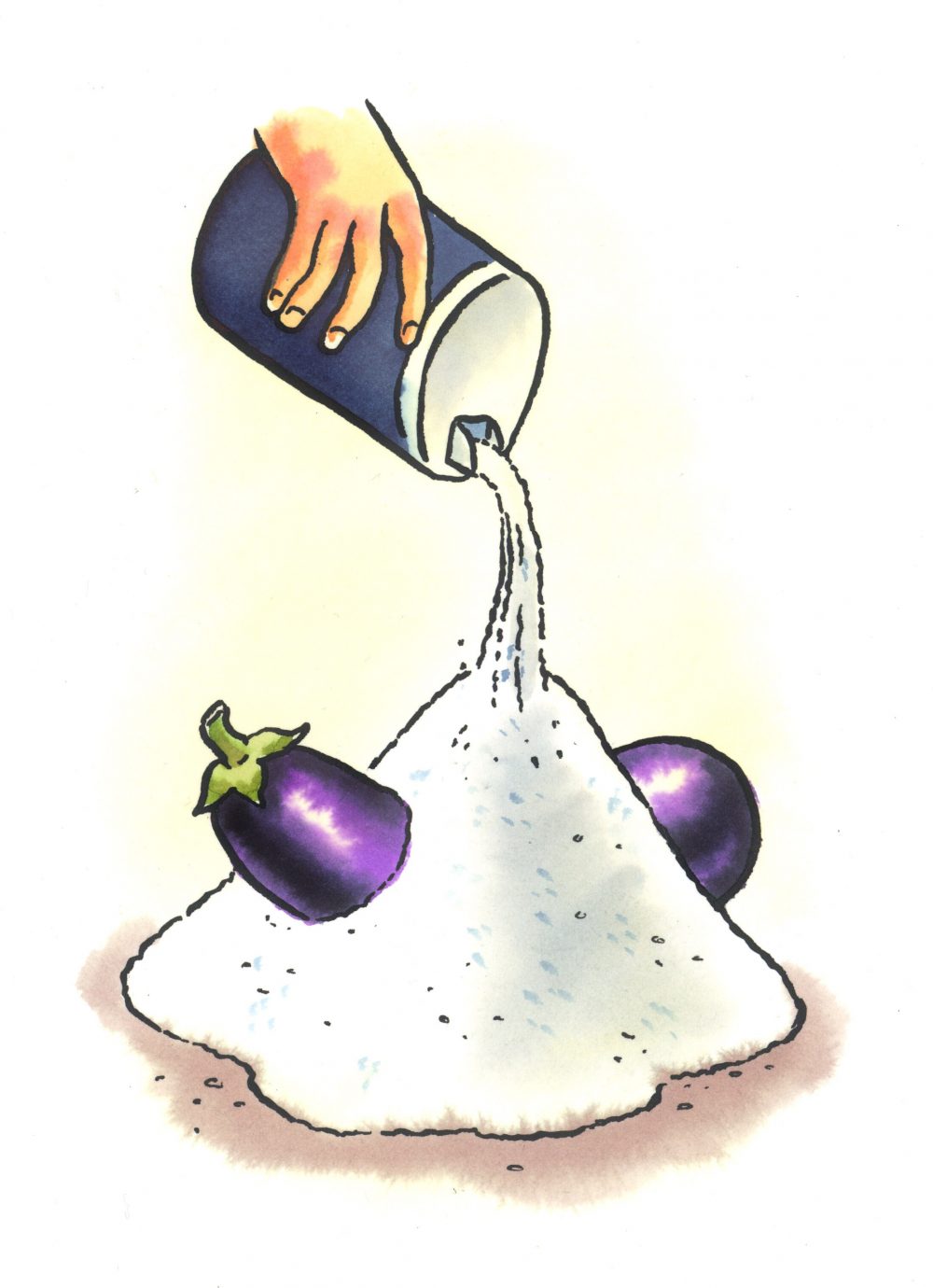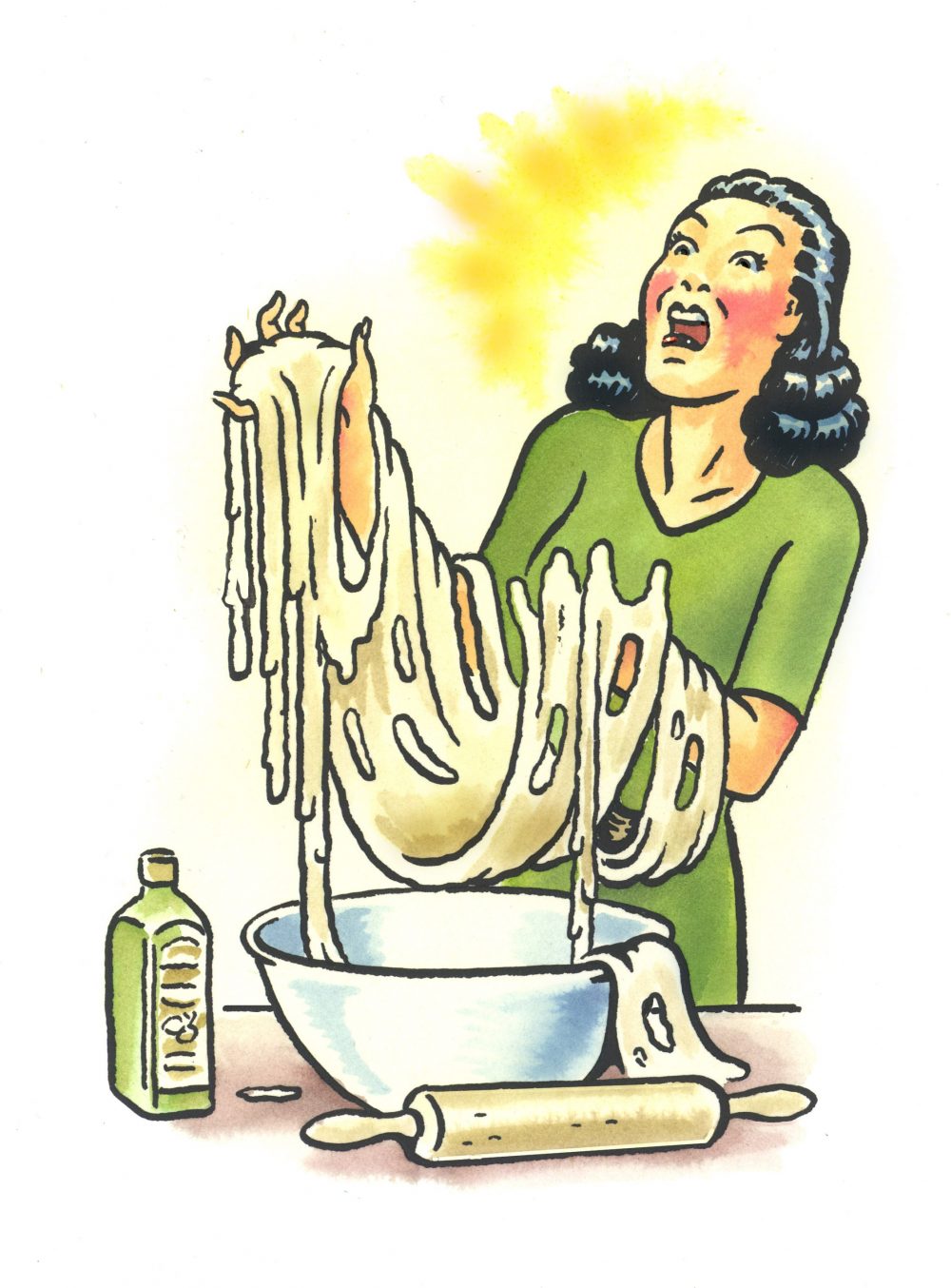
To Salt, or Not to Salt?
Conventional culinary wisdom urges cooks to salt eggplant before cooking it, so as to remove water and tame bitterness. Sharon Boyd, of Wilmington, Delaware, wondered whether that was really necessary and, if so, if there’s a better way.
Thanks to their spongy flesh, eggplant are capable of retaining an extraordinary amount of moisture—moisture that can inhibit browning during cooking. They also have a reputation as having a bitter taste. Cooks have long dealt with both issues by generously salting the flesh and setting it in a colander to drain before cooking. These days, bitterness has been bred out of most eggplant. But excess moisture is still an issue. In our testing, we compared conventional salting with a newer technique: salting and microwaving. In each case, we sprinkled cubed eggplant with 1 teaspoon kosher salt. For the standard method, we let it drain for 30 minutes, then blotted it dry. It worked as expected. For the microwave approach, we heated cubed, salted eggplant (set on a paper towel-lined plate) on high for 5 minutes. Though this approach removed water more quickly, it yielded gray, mushy eggplant that tasted too salty. The good news is that we’ve found that eggplant actually does not need to be salted and dried in order to achieve nice browning. In recipes for dishes such as caponata, longer cooking works just as well to evaporate excess water and clear the way for flavorful caramelization.
Can You Counterfeit Kimchi?
At milk street, we love kimchi, a fiery slaw-like fermented cabbage from Korea. But some readers on Facebook wondered whether they could substitute kimchi’s German cousin, sauerkraut.
Our gut reaction was, no way. Though both products are made from fermented cabbage (albeit different types of cabbage), kimchi is spiked with a potent mash of chili powder, scallions, garlic and other flavorings. Yet we found that sauerkraut does share one important thing with kimchi: that distinctive sour tang from lactic acid fermentation. We recommend using refrigerated sauerkraut, which is raw and has a crunchier texture and better flavor than canned or jarred. To substitute for 1 cup kimchi, we rinsed 1 cup lightly packed sauerkraut to flush away the saltiness. We then mixed it with ½ teaspoon sweet paprika, 1/4 teaspoon finely grated garlic, ⅛ teaspoon cayenne pepper and 1 tablespoon unseasoned rice vinegar. Though the overall flavor was not identical to kimchi, we found our doctored version to be a reasonable replacement.
Finding a Fat That Fits
We often hear about substituting olive oil for butter. But what about in baking? Carla Kahler, of Winnetka, Illinois, asked for guidance on which recipes can handle the switch.
Oil and butter often are interchangeable in savory cooking, but the swap isn’t as simple when baking. For biscuits, scones and pie pastry, in which cold, solid butter is cut into dry ingredients, oil is a poor substitute because the dry ingredients would absorb the oil, yielding a sodden dough. Cakes, quick breads, brownies and certain cookies—in which butter usually is creamed or melted—have a bit more wiggle room. Creaming involves beating softened butter with sugar, incorporating air into the mixture that helps the batter or dough rise during baking. In recipes in which the butter is creamed, oil is not an appropriate substitute because it cannot trap and hold air the way softened butter can. However, our kitchen tests show that in baked goods made with melted butter (where the butter simply is whisked with other ingredients, and rise depends on either baking powder, baking soda, beaten egg whites or a combination), oil is a reasonable substitute. Cakes, in particular, stand to benefit from oil because oil remains fluid at room temperature (unlike butter), which contributes to a moist mouthfeel and softer crumb (take, for instance, carrot cake and chiffon cake). If you’re considering extra-virgin olive oil, keep in mind that its flavor is assertive. As such, we found that it was not a good match for a plain vanilla cake—milder-tasting regular or light olive oil are better choices. But we did find that extra-virgin’s fruity, peppery notes work well with spices, citrus and chocolate. In some cases, we found that baked goods made with olive oil did not brown as well as those made with butter. Also bear in mind that butter has a water content of about 16 percent, so if you’re substituting oil—which contains no water—you may want to scale back a bit to prevent greasiness. As a guide, 8 tablespoons of butter (1 stick) contains approximately 1½ teaspoons of water.




